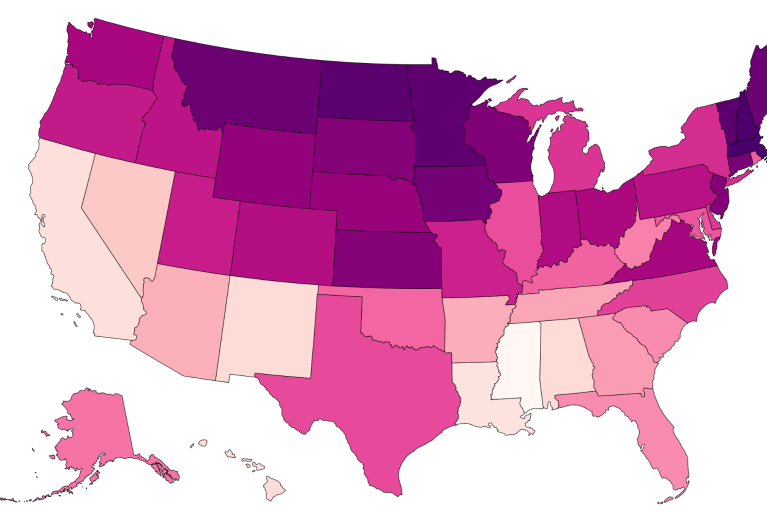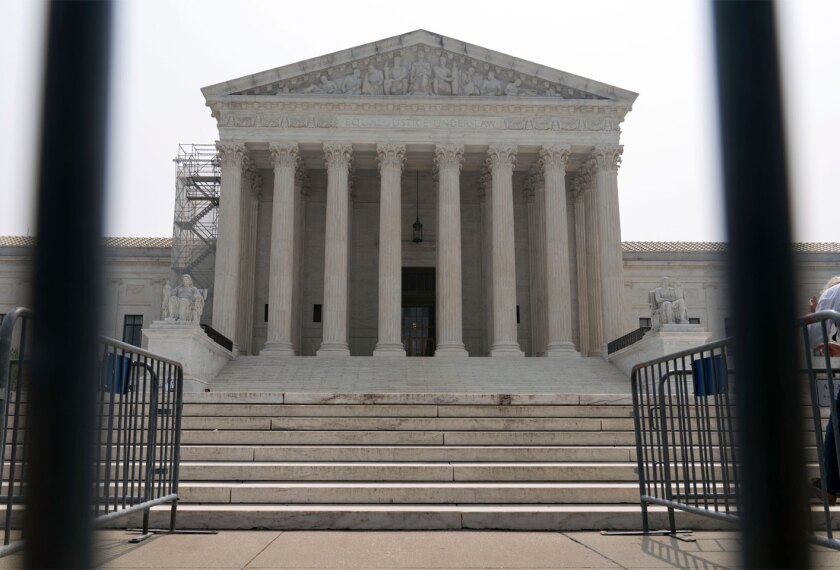Simply finding the time to take a bathroom break during the school day can be tricky for teachers. Fitting in breaks of 20 minutes or so every couple of hours during the school day to pump can feel impossible for breastfeeding teachers. Laura Patranella knows this all too well.
Patranella was teaching 8th grade in Seguin, Texas, when her middle child was born in January 2017. When she returned to work that March, she would ask a coworker to cover the first 20 minutes of class once a day as she ran to a closet in the library to pump. When her administration found out and told her to stop, Patranella—already wracked with guilt over stepping away from her students during class time—didn’t push back.
Six years later, countless other teachers continue to encounter similar obstacles, despite recently enhanced federal legislation that guarantees employees the right to reasonable break time and private space to pump during the workday.
A recent, unscientific Education Week poll on social media bore this out. When asked, “Are breastfeeding teachers at your school given time and resources to pump during the school day?,” 40 percent of 790 respondents answered “no.”
Accommodations and time for pumping at work is an unmet need that affects countless educators, as more than three-quarters of public school teachers are women, and many are of childbearing age.
Education Week spoke to teachers and a legal advocate to understand why so many schools fail to provide pumping accommodations to teachers, despite federal policies intended to guarantee this access. But while many schools have been slow to adhere to these workplace policies, some are finding ways to make pumping possible for women at work.
What the law says schools must do for breastfeeding teachers
The Providing Urgent Maternal Protections for Nursing Mothers, or PUMP, Act, signed into law by President Joe Biden in December 2022, expanded breastfeeding accommodations in the workplace to salaried employees, including teachers.
It requires employers to provide breastfeeding workers a place to pump that’s shielded from view and is not a bathroom. It also requires employers to allow for reasonable break times for an employee to pump throughout the workday for the first year of their baby’s life.
Previously, the federal law granted this protection only to hourly employees, which left out teachers.
A 2024 amendment to Title IX, the federal law prohibiting sex-based discrimination, offers a similar protection for school employees. It requires any schools and postsecondary institutions that receive federal funds to “allow for reasonable break time for lactation for employees, and access to a clean, private lactation space for students and employees.” This final Title IX rule went into effect Aug. 1.
Some teachers pump in subpar settings, others stop
Reports from teachers reveal that not all schools are adhering to these laws.
“When I had my children, I was not given the time or space until I provided the law and then it was provided, but so many parents complained about taking the time during class that I gave up,” educator Christy Krenek wrote in response to the Education Week poll on breastfeeding accommodations at work.
“There’s a sense of resignation and fear among educators,” said Jessica Lee, co-director of the Center for WorkLife Law, an advocacy and research organization affiliated with the University of California College of the Law, San Francisco. “They feel like: If I complain, I might get put in a grade that’s not my favorite, or [be asked to] change schools. They’re worried about rocking the boat.”
Employees who give up on trying to pump at work are less likely to continue breastfeeding. It’s a decision that can come with health implications, as the practice has long been endorsed by the American Academy of Pediatrics, which refers to breastfeeding as a “public health imperative” and recommends exclusive breastfeeding for six months after birth and continued breastfeeding for months beyond because of breastfeeding’s medical and neurodevelopmental advantages.
While some teachers decide to stop pumping in workplaces that don’t support the practice, others persist despite less-than-ideal circumstances.
“I have a co-worker who said: ‘I hope you’re not uncomfortable that I’ll be pumping during staff meetings and at lunch,’” said Patranella, the Texas teacher, adding that another coworker of hers—a behavioral specialist at an elementary school—would regularly pump with one or two students in the room.
“Schools are doing the best they can do,” said Patranella, who is now a mother of three and has been an educator for 11 years. “But there is the reality of very tightly staffed campuses.”
Lee sees the issue differently. “There is a clear duty to provide lactation breaks and space. That obligation is enforceable [by law],” she said.
Lee also attributes the uneven enforcement of pumping policies in schools to long-held cultural norms.
“The attitude that educators need to be willing to sacrifice everything for their students has created a culture where noncompliance was the norm,” Lee said. “A lot of school systems have been betting that their teachers will not hold them accountable.”
Culture shift and ‘all-hands-on deck’ mentality can make pumping work
It can take a significant culture shift within a school system before administrators and staff recognize that obstacles like understaffing aren’t an excuse for violating federal laws, Lee said.
But it’s not unheard of. She shared examples of school districts that have gotten creative—for example, increasing staffing during recess so that a teacher can be relieved of that duty to pump, or having administrators step in to monitor a classroom.
Michael Kalb, a retired principal from San Jose, Calif., describes taking an “all-hands-on-deck” approach to support his breastfeeding teachers.
“All staff would help cover the classroom, including me and my assistant principal, should the need arise. For several teachers we kept this up until the baby no longer needed breast milk,” he said.
Michael Martin, the principal at New Washington, Ohio’s Buckeye Central High School and the 2024 Ohio Principal of the Year, takes a deliberate approach of scheduling employees’ pumping needs.
“I will usually plan a week out, so there is advanced knowledge which makes it easier to accommodate changing schedules,” he said.
He schedules pumping breaks during the staff members’ planning periods, allowing for privacy while minimizing disruptions to teaching schedules and responsibilities. He also makes sure students know not to seek help from these teachers during designated pumping periods.
“This clarity helps maintain a respectful and understanding environment for everyone involved,” Martin said.
“I know it’s a lot to juggle in our schools, and everyone’s stretched thin, but pumping breaks don’t take that long. There’s a way to build them into a teacher’s schedule,” Lee said. “At the end of the day, it’s just a matter of taking it seriously.”
Disclaimer: The copyright of this article belongs to the original author. Reposting this article is solely for the purpose of information dissemination and does not constitute any investment advice. If there is any infringement, please contact us immediately. We will make corrections or deletions as necessary. Thank you.







